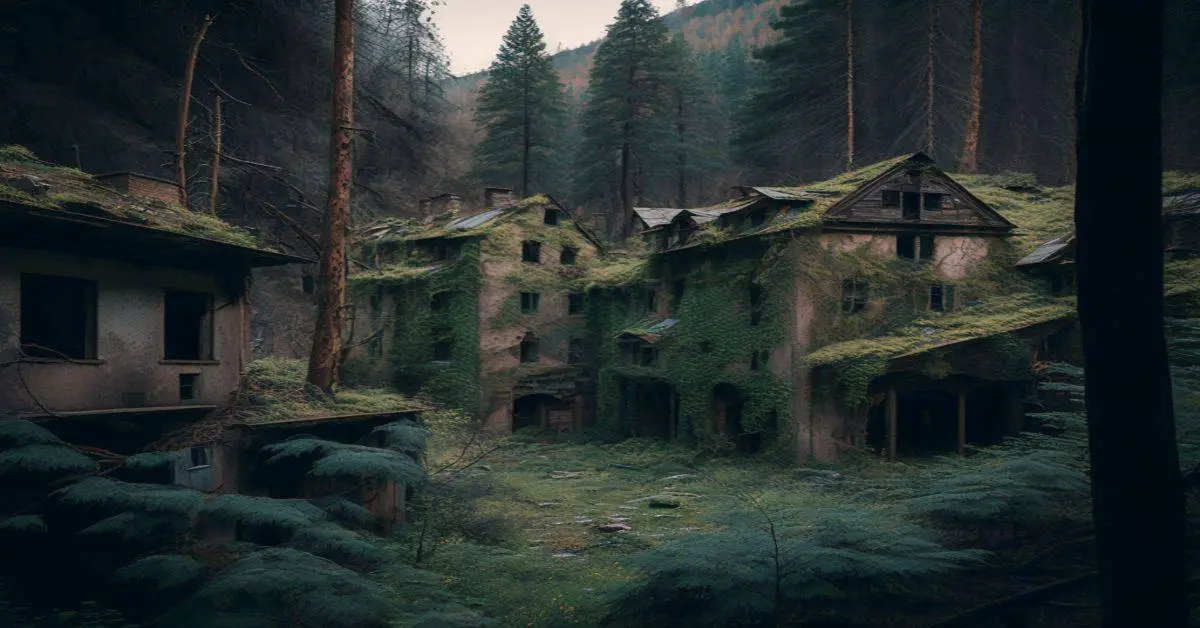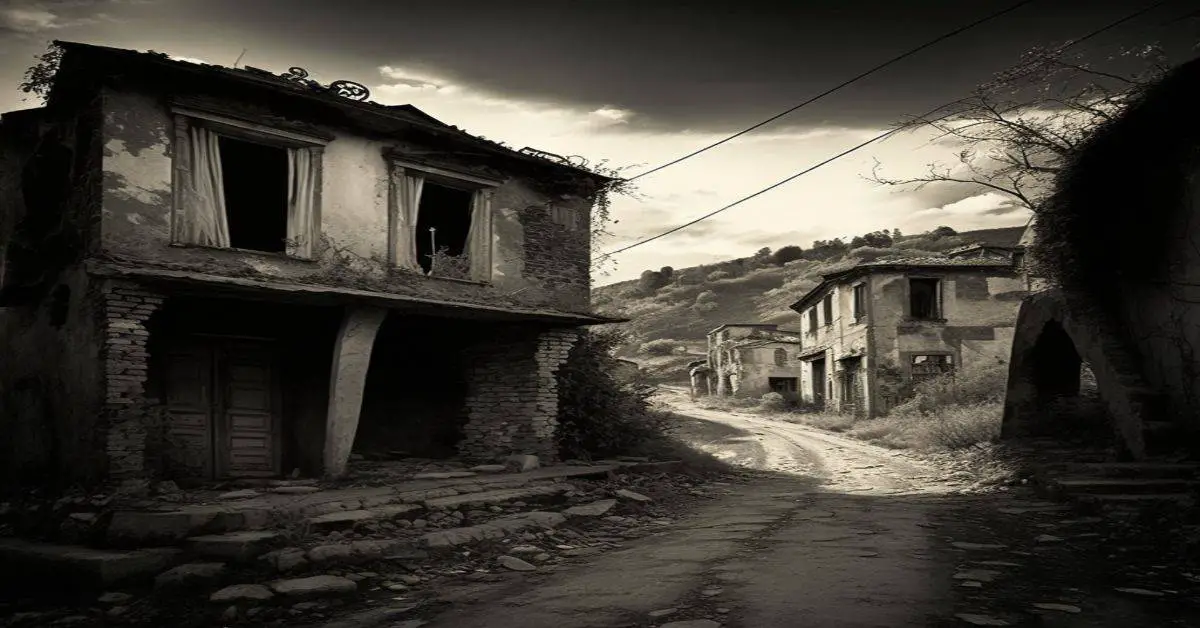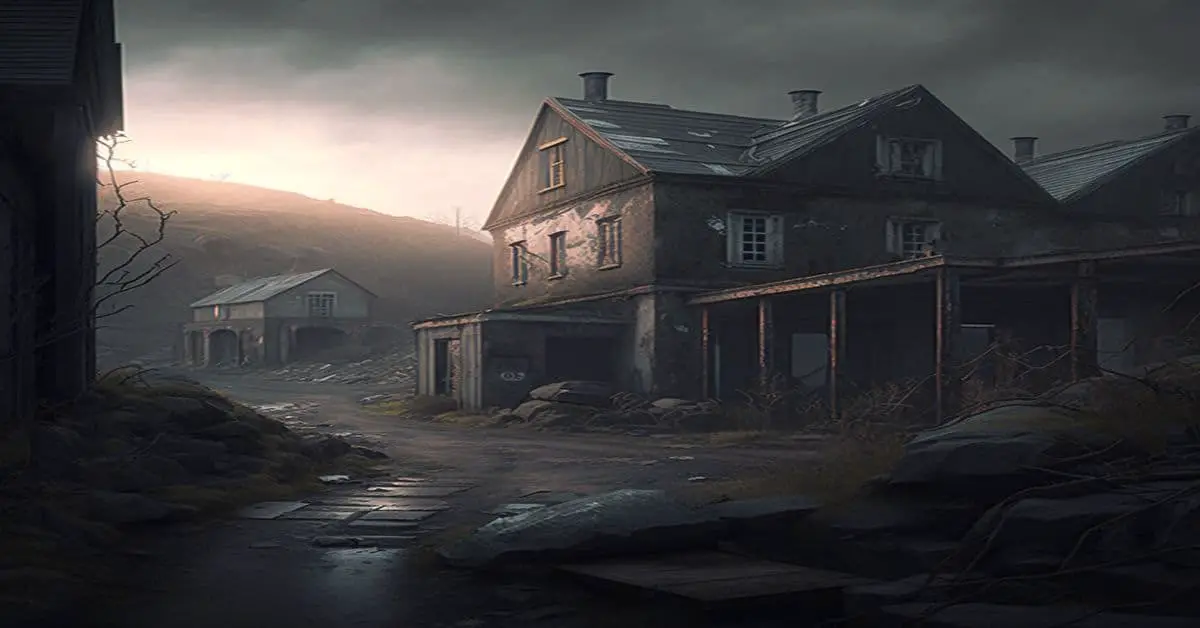A ghost town is a place that was once bustling with life but has since been abandoned, leaving behind empty buildings, streets, and a haunting atmosphere. These towns often have a rich history, from mining boomtowns to sites of natural disasters.
In this article, we will explore the different types of ghost towns, their unique characteristics, and what makes them so fascinating.
The Rise and Fall of Ghost Towns
Economic Decline
Economic decline is one of the most common reasons for the creation of ghost towns. When the economic activity that once supported a town, such as mining or agriculture, becomes unprofitable or depleted, the inhabitants often move on in search of better opportunities.
This leaves behind a shell of a town, with empty buildings and streets slowly reclaimed by nature. Some examples of ghost towns that have suffered from economic decline include the mining towns of Bodie, California, and Rhyolite, Nevada.
Natural Disasters
Natural disasters, such as earthquakes, floods, and volcanic eruptions, can also lead to the abandonment of towns. For example, the town of Craco, Italy, was abandoned after a landslide in 1963, while the town of Dhanushkodi, India, was deserted following a devastating cyclone in 1964.
In both cases, the destruction caused by the disaster was so extensive that it was deemed too dangerous or economically unfeasible to rebuild the town.
Man-Made Disasters
Man-made disasters, such as nuclear accidents and war, can also create ghost towns. The most famous example of a ghost town created by a nuclear disaster is Pripyat, Ukraine, which was abandoned after the Chernobyl disaster in 1986.
Similarly, the towns of Oradour-sur-Glane in France and Aghdam in Azerbaijan were left deserted due to war and violence.
Changes in Transportation Routes
Ghost towns can also be created when transportation routes change, such as when a railway is abandoned or a highway is rerouted. This often leads to the decline of towns that depended on the traffic brought by these routes, as people and businesses move to more accessible locations.
Examples of ghost towns created by changes in transportation routes include Amboy, California, which was abandoned when the railroad stopped running through the town, and Glenrio, a town located on the border of Texas and New Mexico, which was left deserted after the construction of a new highway bypassed the town.
Ghost Towns Around the World
Ghost towns can be found in various parts of the world, each with its unique history and characteristics. This section will explore some of the most notable ghost towns from different continents.
North America
North America is home to numerous ghost towns established during the gold rush era or as mining towns. Some examples include:
- Bannack, Montana: A former gold-mining boomtown abandoned when the gold ran out.
- Calico, California: A silver-mining town abandoned after the price of silver plummeted.
- Rhyolite, Nevada: A gold-mining town deserted when the mines were depleted.
South America
In South America, ghost towns often have a mining or agricultural activity history. Some examples include:
- Humberstone and Santa Laura Saltpeter Works, Chile: These abandoned mining towns were once bustling centers of saltpeter production, but were abandoned when the industry collapsed.
- Fordlandia, Brazil: This town was established by the Ford Motor Company as a rubber plantation, but was abandoned when the venture proved unprofitable.
Europe
Europe is home to a variety of ghost towns, ranging from abandoned medieval villages to towns deserted due to war or disaster. Some examples include:
- Oradour-sur-Glane, France: A town abandoned after the entire population was massacred during World War II.
- Pripyat, Ukraine: A city abandoned after the Chernobyl nuclear disaster.
- Craco, Italy: A medieval village abandoned due to landslides and erosion.
Asia
Asia also has its share of ghost towns, often resulting from war, disaster, or economic decline. Some examples include:
- Hashima Island, Japan: Also known as “Battleship Island,” this abandoned coal-mining island is now a popular tourist destination.
- Kadykchan, Russia: A former coal-mining town that was abandoned after the collapse of the Soviet Union and a mining accident.
- Aghdam, Azerbaijan: A city abandoned due to war and violence during the Nagorno-Karabakh conflict.
Africa
In Africa, ghost towns often have a mining or colonial settlement history. Some examples include:
- Kolmanskop, Namibia: A former diamond-mining town that was abandoned when the diamond fields were depleted.
- Plymouth, Montserrat: The former capital of Montserrat, this town was abandoned after a volcanic eruption in 1995.
Oceania
Ghost towns in Oceania often have a history of mining or agricultural activity. Some examples include:
- Walhalla, Victoria, Australia: A gold-mining town abandoned when the mines were depleted.
- South Pass City, Wyoming, USA: A gold-mining town abandoned after the mines closed.
Visiting Ghost Towns
With their haunting beauty and rich history, ghost towns have become popular tourist destinations in recent years. However, visiting these abandoned places comes with its own set of challenges and risks.
Safety Precautions
When visiting a ghost town, it is important to take safety precautions to minimize the risk of injury or illness. Some tips include:
- Wear sturdy shoes and appropriate clothing to protect yourself from broken glass, rusty nails, and uneven terrain.
- Bring a flashlight to explore dark or enclosed spaces like abandoned buildings.
- Be aware of the potential for unstable structures, as many ghost towns have been left to deteriorate for years.
- Avoid entering areas clearly marked as off-limits or dangerous, such as contaminated sites or areas with a risk of collapse.
Legal Considerations
Before visiting a ghost town, it is important to research any legal restrictions or requirements that may apply. Some ghost towns are located on private property, and trespassing may be prohibited. Others may be part of protected areas or heritage sites, and special permits or fees may be required to visit. Ghost towns may sometimes be off-limits altogether due to safety concerns or ongoing preservation efforts.
Ethical Considerations
When visiting a ghost town, it is important to treat the site with respect and consideration for its historical and cultural significance. This includes:
- Following the “leave no trace” principle and not disturbing or removing any artifacts, structures, or natural features.
- Respect any local customs, traditions, or beliefs associated with the site.
- Being sensitive to the emotions and memories that may be tied to the site, particularly for ghost towns that were abandoned due to disaster or tragedy.
The Future of Ghost Towns
While many ghost towns remain abandoned and continue to deteriorate, some have experienced a resurgence in recent years. This can be attributed to several factors, including:
Heritage Tourism
Heritage tourism has led to the revitalization of some ghost towns, as visitors are drawn to these abandoned places’ unique history and atmosphere. This has led to the restoration and preservation of historic buildings and the development of new attractions and amenities to cater to tourists.
Adaptive Reuse
In some cases, ghost towns have been given a new lease on life through adaptive reuse, with abandoned buildings and infrastructure being repurposed for modern needs. This can include the conversion of former industrial sites into residential, commercial, or cultural spaces, or the redevelopment of ghost towns for eco-tourism or other sustainable industries.
Urban Renewal
As urban populations grow, some ghost towns have been incorporated into expanding cities or redeveloped as part of urban renewal projects. This can involve restoring historic buildings and creating new housing, businesses, and public spaces, helping to breathe new life into these once-abandoned areas.
The Appeal of Ghost Towns
Ghost towns uniquely appeal to many people, offering a glimpse into the past and a chance to explore the remains of once-thriving communities. They serve as a reminder of the impermanence of human settlements and the resilience and adaptability of the people who once called these places home.
Whether visited for their haunting beauty, rich history, or simply the thrill of stepping back in time, ghost towns will continue to captivate the imagination and inspire curiosity for years.



